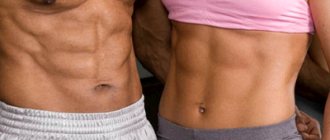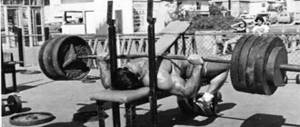Authors:
, And . May 13, 2021
Is periodizing a strength training program necessary for your clients?
Much of the literature on periodization to date has focused on increasing strength and improving athletic performance in athletes seeking to balance the demands of general fitness, specific fitness, and competition (Bartholomew, 2014). But many non-athlete clients also seek to accelerate muscle growth, and few studies address the question of whether the periodization model should be used in hypertrophy-focused strength training programs for non-athletes. This article reviews the best research to help answer the important question: Will periodizing a strength training plan help maximize skeletal muscle hypertrophy?
Some terms
Strength training programs consist of numerous variables including volume, intensity, frequency, rest intervals, exercise selection, and order (Williams et al., 2017). Periodization is the planned, cyclical (i.e. the program is repeated) manipulation of these strength training variables to achieve maximum results at specific times of the year (Evans, 2019). Periodic strength training plans consist of several cycles:
- macrocycle (6-12 months);
- mesocycles (~ 1 month);
- microcycles (~ 1 week) (Evans, 2019; Issurin, 2010).
The length of each training cycle will vary across sports depending on the competition schedule and the athlete's goals. Evans cites research noting that long periods of training without variation will lead to stagnation and fatigue. Thus, the primary goal of periodization is to provide structured variability to combat plateaus or declines in physical performance.
Types of periodization
Research focuses primarily on the three types of periodization most commonly used: linear, block, and wave.
Linear periodization
Linear periodization (LP)
is a training strategy that starts with high volume and low intensity and then progresses to low volume and high intensity (Grick et al., 2017). LP was introduced in the late 1950s by Russian professor Lev Matveev and is also called traditional periodization in the literature (Kok, Hamer, and Bishop, 2009; Bartolomei et al., 2014). With linear periodization, athletes gradually increase intensity as the program progresses while decreasing volume (see Figure 1).
Theoretically, the initial high-volume phase emphasizes hypertrophic adaptations, and the subsequent high-intensity period challenges the body's neural mechanisms (Kock, Hamer, & Bishop, 2009). In Fig. Figure 1 shows how in the LP model, in parallel with intensity, the specificity of training methods increases. Of course, each trainer will have their own LP training program, but the general rule is to change the volume and intensity every 4 weeks (Grick et al., 2017).
Rice. 1. Linear (traditional) periodization model.
Please note that as intensity increases, exercise volume decreases. In parallel with intensity, the specificity of training methods increases.
Source: Turner, 2011.
Block periodization
Block periodization (BP)
consists of several mesocycles with a concentrated effect on a specific indicator (Bartolomei et al., 2014) (Fig. 2). Each mesocycle, or block of time, prepares the client for the next cycle. For athletes, mesocycles are divided into three categories: accumulation, transformation and implementation (Issurin, 2010). The BP methodology was introduced in the mid-1980s by Russian scientist Yuri Verkhoshansky to meet the changing needs of athletes (Bartolomei et al., 2014).
Battery pack
focuses primarily on general aerobic endurance, core muscle strength, and fundamental movement techniques (Issurin 2010).
During the transformation block,
the athlete performs specialized exercises for muscular endurance and practices techniques specific to his sport (Issurin, 2010).
Finally, the implementation block
is the stage of preparation for competitions, focused on achieving maximum speed and performance. Each block lasts 2–4 weeks, depending on the length of the program and the client's specific goals (Issurin, 2010).
Rice. 2. Block periodization model. Repetitions - repetitions. Accumulation - accumulation. Transformation - transformation. Transition week - transition week. Realization - implementation. Weeks - weeks.
This is a model of block periodization of training to improve general fitness with 4-week blocks (compiled by the authors of this article). The goal of this program is to increase strength and muscle mass by progressively increasing training intensity (and decreasing volume) every 4 weeks. Please note that weeks 5, 10 and 15 are transition weeks of light intensity exercise. Approaches, choice and order of exercises, rest between approaches will be different for each client.
Wave-like periodization
Wave-like periodization (WP)
involves frequent changes in volume and intensity within a training program; these changes often occur weekly (WUP) and/or daily undulating periodization (DUP) (Evans, 2019) (Figures 3 and 4 with daily and weekly undulating periodization patterns). During the WUP program, you cycle through light, medium, and high-intensity workouts for weeks. During the DUP program, the intensity varies daily. Essentially, this means that in the DUP program, a client can perform both hypertrophy, strength, and power training in one week.
Evans summarizes research indicating that VP programs are best suited for strength development in strength training programs. McNamara and Stern (2010) state that the benefit of an undulating program is that it helps prevent boredom and overtraining. It is also easy to adapt to the client's travel schedule. Frequent changes in volume and intensity in EP programs can induce greater neural adaptations while preventing the development of fatigue (Pelzer, Ulrich, & Pfeiffer, 2017). If you graph the intensity, it will have a wave-like shape.
Rice. 3. Wave-like model of periodization by week. REPETITTIONS - repetitions. TRANSITION WEEK - transition week.
Please note that weeks 5 and 10 are transitional weeks. The intensity in this example is based on the percentage of the client's 1 rep max (1-RM).
Adapted from Bartholomew et al., 2015.
Rice. 4. Wave-like model of periodization by day. TO FATIGUE - to failure.
This program is based on intensity to failure in the rep range, where participants perform all exercises to muscle failure in each rep range (2-4, 8-12, 20-30). This pattern continues in subsequent weeks of training.
Adapted from Scheunfeld et al., 2021.
Periodization - what is it?
Most professional athletes prepare for the sports season using periodization. The periods usually consist of 4–6 phases. Each phase has its own goal. When it comes to bodybuilding, periodization can be a great tool if you plan it out well.
When your body has finally caught up with the crazy training routine and fatigue sets in, you change the game. You change your point of focus and increase muscle stimulation to trigger a new series of adaptations.
Typically, each training phase consists of 12 week cycles. Changing your goals and training style in each phase can transform your body and help you quickly overcome a training plateau.
Changing your goals will help you transform your body and quickly overcome your training plateau.
The Unique Benefits of Periodized Strength Training
- Lifting weights in one intensity zone over time can cause performance to stagnate (Turner, 2011). A periodic program prevents stagnation by constantly overloading the neuromuscular system with varying intensities.
- Continuous training with heavy loads can lead to excessive fatigue, overtraining, and soft tissue injuries (Turner, 2011; Williams et al., 2017). Intermittent plans involve undulating periods of low, moderate and high volume and intensity to prevent overtraining and deterioration in performance.
- In accordance with the SAID principle (specific adaptations to imposed demands), periodic plans allow personal trainers and their clients to create a program to achieve a variety of specific training results.
- A brand new study shows that low-intensity strength training (30% of 1-RM) improves mitochondrial quality and quantity (i.e., ATP production of cell organelles) (Lim et al., 2019). Thus, intentionally incorporating low-intensity blocks will also improve the aerobic capacity of skeletal muscle fibers.
- Periodization allows trainers to easily incorporate taper weeks into a training program to promote recovery and promote neuromuscular adaptations (Turner, 2011).
- Periodization allows personal trainers to schedule push-out phases (short microcycles of increasing volume and/or intensity that provide a powerful stimulus for adaptation).
Bodybuilding as a way of life
Let's face it: most of us are not going to become Mr. Universe. For most of us, bodybuilding is a way of life. A bodybuilder is something else.
Most people, standing in front of a mirror, get excited about lifting weights for two reasons: vanity and fear.
We are driven by passion, pain, hard work and success. Bodybuilding is the epitome of discipline, hard work and the ability to overcome obstacles. Why not take the time to create a plan and train according to it, like other athletes do to achieve high results in sports? After all, ladies and gentlemen, life is a sport!
Training the same way for an entire year without changing is like trying to become a world-renowned scientist by doing fifth-grader-level science projects day after day. Periodization will add variety to your workouts, revitalize them, help you overcome training plateaus and prevent injury.
We are driven by passion, pain, hard work and success
Periodization and hypertrophy: main research results
Table 1. Increase in thickness of vastus lateralis and rectus femoris
| Muscle | Traditional periodization | Wave-like periodization by day |
| proximal VL | 19% | 14% |
| average VL | 18% | 17% |
| distal VL | 21% | 19% |
| RF | 16% | 11% |
The researchers measured the vastus lateralis using ultrasound at 33% (proximal VL), 50% (middle VL) and 66% (distal VL) of the femoral length, defined as the distance from the greater trochanter to the knee joint space. They performed an ultrasound examination of the rectus femoris approximately halfway between the anterior superior iliac spine and the proximal superior border of the patella.
Source: Peltzer, Ulrich and Pfeiffer, 2021.
Table 2. Ultrasound findings show that muscle size increases with Daily Undulating Periodization (DUP) compared to Constant Load (CSLD)
| Side to be measured | DUP % increase | CSLD % increase |
| vastus laterals | +7,6% | +8,6% |
| biceps | +6,6% | +5,0% |
| triceps | +6,4% | +4,2% |
Source: Scheunfeld et al., 2021.
Two studies in the past few years have focused on muscle hypertrophy as a result of periodization. One study focused on women doing moderate strength training and the other on men doing heavy strength training.
Here are reviews of these two works.
Women's moderate strength training
Pelzer, Ulrich, and Pfeiffer (2017) conducted a very interesting study with 19 college women, none of whom were professional athletes. The girls had been doing strength training for some time before (on average about 28 months). Participants were randomly assigned to one of two conditions on each leg: daily undulating periodization or traditional periodization (i.e. linear, as you remember). The participants controlled themselves, training one leg under one periodization, the other under the other. All participants trained 3 days a week for 6 weeks, for a total of 18 sessions and only one exercise - leg extension.
For the DUP leg, the intensity of 40%, 60% and 80% of 1-RM alternated daily, and for the TP leg, the exercise was performed at the same intensity for 2 weeks, starting at 40%, then the intensity steadily increased to 60%, and then up to 80% of 1-RM. Range of motion, volume, and time under tension were identical for both legs. Participants completed all sets with one leg before moving on to the other leg. There was a 2.5 minute rest between sets.
Ultrasound measurements showed that both groups significantly increased the thickness of the vastus lateralis and rectus femoris (see Table 1). There was no statistically significant difference in muscle thickness between groups (although it was slightly greater with TP).
Based on this research, when personal trainers are pressed for time and the client is looking for quick results (e.g., 4-6 weeks), DUP and TP are appropriate for creating a strong hypertrophic stimulus in women doing moderate strength training.
Men doing heavy weight training
Schoenfeld and colleagues (2016) divided young men involved in high-load strength training into two groups based on the weight they squatted with: a constant-load (CSLD) group (n = 9) and a wave-period daily group (n = 10). The CSLD group performed moderate-intensity strength training (8-12 repetitions), while the DUP group performed heavy (2-4 repetitions), moderate (8-12 repetitions), and light (20-30 repetitions) strength exercises on training days.
Both groups trained 3 days a week for 8 weeks. All participants performed each set of the exercise to failure, defined as the inability to complete the concentric phase of the movement. The rest between sets was 2 minutes. Seven full-body exercises were performed each day: bench press, military press, lat pull-down, seated horizontal row, barbell squat, and leg extension. Biceps, triceps, and vastus lateralis thicknesses were measured using ultrasound at baseline and after 8 weeks of resistance training (see Table 2).
Both groups significantly increased muscle thickness, and there was no statistical difference in results between the two protocols. When examining the statistical magnitude of change from pretest to posttest, called effect size,
The researchers found that DUP produced greater improvements than CSLD in the biceps and triceps. This suggests that the higher performance in the DUP group for the triceps and biceps is noteworthy. In summary, the study results indicate that 8 weeks of DUP or CSLD training can significantly improve muscle adaptation in training men.
Periodization in Bodybuilding - Sample Schedule
Phase 1: 4 months - Mass gain
The goal is simple: gain muscle mass and increase size. Back to basics: train to the fullest. If you can muster up all your courage, include basic strength exercises in your training. Make them easy at first, then increase the intensity - squats, bent-over rows, deadlifts, bench presses, etc.
These are the heavy, core bodybuilding exercises on which the sport is built. You should also eat right. Use whey protein and casein (we recommend Syntha-6 whey protein and Universal Casein Pro). Eat a diet containing more carbohydrates and calories to support anabolic processes in the body. Eat healthy, avoiding excess fat.
This intense type of training cannot go on for too long without fuel. When developing a training program, include consecutive sets with longer breaks. Lift as much weight as possible, and remember to rest and recover.
Dream, dream, dream. We gain strength during sleep. Regularly select a maximum of 2 body parts to train. In this phase of the program, cardio loads should be light, and as for the weight, it should be heavy!
Phase 2: 4 months - Weight loss and leap forward
The goal of this phase is to maintain muscle mass while losing fat. We hope that you have already gained a decent amount of muscle during the previous phase, and now the time has come to “unleash” it.
In this part, you should start using certain exercise equipment. Combine them with dumbbell work to engage as many muscles as possible during your workout.
Focus on training your abdominal muscles, taking very short breaks between sets. Use compound sets and supersets. Increase the number of sets to build up volume. Add a series of exercises with increased repetitions.
Your diet should also undergo significant changes. Reduce the amount of simple carbohydrates. I would suggest reducing your calorie intake by 500-700. Anything else may be too drastic and will cause your body to use your hard-earned muscles as a source of energy.
The total volume of exercise should increase. This will help burn more calories in less time, triggering catabolic processes in the body.
Try to attend two separate workouts per day. Cardio exercises are preferable before noon, and lift weights in the afternoon and evening. 45 minutes for each session will be enough. Glutamine and other recovery supplements can be helpful during this phase. Additional fat burning supplements can also be used at this stage.
In this phase you should start using exercise equipment
Phase 3: 4 months - Active recovery, learning and functional strength
Focus on maintaining or slightly increasing muscle mass. You should be leaner, stronger and better looking. Choose the weight that is best for you and focus on it. Incorporate half reps, negatives, and quick explosive reps to really recruit as many muscle fibers as possible.
Make sure you focus on the lagging parts of your body and train them harder. Choose a rep range and intensity that you consider moderate for your workouts. Moderate cardio exercise will also help you look better.
Focus on flexibility and include weight-bearing exercises in your program. Use weights and a variety of gymnastic exercises. What is very important is that you need adequate sleep and recovery.
This phase also involves learning different materials and trying new exercises and techniques that you would like to use in the future.
Select a rep range and intensity that you consider moderate for your workouts
Overcoming the biggest limitation in the science of periodization
The biggest limitation in the science of periodization is the short duration of studies. Fortunately, there is one 9-month study conducted by Kramer and colleagues (2003).
The researchers divided 30 female tennis players into three groups: daily undulating periodization, constant-load training, and a control group. The DUP and CSLD groups performed full-body strength training 3 days per week for 36 weeks for a total of 108 sessions, while the control group did no training. At the same volume (sets x reps), the DUP group completed three load zones (4-6, 8-10, 12-15 reps), while the CSLD group performed strength exercises in the same load zone for 8-10 reps. It should be noted that in both experimental groups, when a participant was able to perform the required number of repetitions for three consecutive sets of a particular exercise, the training load was increased in increments of about 2-13 kilograms.
Compared to participants in the control group, the two training groups significantly increased lean mass (i.e., fat-free mass) (DUP = +7.1%; CSLD = +3.5%) and decreased body fat (DUP = -16.6 %; CSLD = -8.9%). More positive results were achieved in the DUP group, although there was no statistical difference between DUP and CSLD. To ensure long-term (e.g., 9-12 months) muscular adaptation, personal trainers are advised to periodize moderate-to-heavy exercise (see Figure 5) into women's training plans, as the DUP program clearly showed impressive results across many physiological domains in this study. parameters. DUP can also promote recovery between workouts, target certain energy systems, and prevent burnout associated with doing the same activities every day.
Rice. 5. Wave-like periodization model for female tennis players
Implementing Flexible Periodization: A New Approach to Periodization
Flexible wave-like periodization allows you to adapt the program depending on the client’s immediate health, nutrition or energy level.
As every personal trainer knows, life sometimes takes unexpected turns that can cause clients undue stress, potentially interfering with their ability to perform at an optimal level. Small problems can also be devastating: a sleepless night, a less nutritious pre-workout lunch, or a missed meal can leave a client feeling energized and motivated before the workout even begins. In these situations, it may be worth modifying that day's workout based on your client's energy level and mood. This can be done using flexible wave periodization.
Flexible wave periodization (FWP) allows the program to be tailored to the client's immediate health, nutritional or energy level. In a 12-week study by McNamara and Stern (2010), the authors randomly assigned 16 untrained participants (age 18–23; men, n = 12; women, n = 4) to either a DVT group (n = ( n No)
In a 12-week study by McNamara and Stern (2010), the authors randomly assigned 16 untrained participants (age 18–23; men, n = 12; women, n = 4) to either a DVT group (n = ( n No) or a wave-shaped group periodization (n = 8). 30-minute workouts twice a week combined free weight and machine exercises. Both groups completed the same amount of training using three intensity levels: 10-RM, 15-RM and 20-RM However, the FUP group was given freedom to choose which days they would perform various upper and lower body exercises at 10-RM, 15-RM, and 20-RM The researchers took measurements before and after the chest press test , leg press and long jump.
or a wave-shaped group periodization (n = 8). 30-minute workouts twice a week combined free weight and machine exercises. Both groups completed the same amount of training using three intensity levels: 10-RM, 15-RM and 20-RM However, the FUP group was given freedom to choose which days they would perform various upper and lower body exercises at 10-RM, 15-RM, and 20-RM The researchers took measurements before and after the chest press test , leg press and long jump.
Both the undulating periodization group and the FUP group had similar improvements in the chest press and broad jump. However, in the leg press, the FUP participants showed a much greater increase in strength (+62 kg) than the VP group (+16 kg).
McNamara and Stern argue that flexible wave periodization is a highly personalized program that adjusts training load based on the client's energy level or mood. Fitness trainers can easily use FUP by simply assessing their client's current condition immediately before training and adjusting the program accordingly. Ultimately, the FUP approach takes into account daily fluctuations in the client's fatigue and psychological readiness. It makes sense that FUP can also improve engagement in the training process by providing the client with autonomy and freedom based on their physiological state and/or mood.
Example of periodization
Let's take a look at a 12-month periodization schedule for a soccer team, and then we'll look at a periodization schedule for a bodybuilder looking to build strong muscles, increase energy, and become immune to injury.
1st phase: March–May – Strength, Power and Hypertrophy
The goal of this phase is to gain as much strength as possible to prepare your connective tissues for the rigors of training. The goal is also to increase muscle mass.
Phase 2: June–August – Maintaining good cardiovascular health
The main goal of this phase is cardiovascular training using interval training, speed and agility training. At this stage, strength is converted into power and speed. Plyometrics are also involved.
Phase 3: Late August–Early December – Skills and Techniques
This phase occurs during the season when you are at your peak. It is necessary to maintain and maintain the strength gained during the rest season.
4th phase: mid-December–February – Recovery and rest season
The best thing is that periodization is very flexible. It is created in order to achieve your goals.
The way the American Football player's periodization scheme is designed allows the athlete to grow and gain strength, turn raw strength into power, and ultimately develop the skills and technique to peak, then rest and start again.
When it comes to building rock-hard muscles, periodization plays a big role in helping you avoid training plateaus, injuries, and overtraining. Remember that when it comes to training, it should be flexible. It should always be possible to adapt the phases, exercises and tasks to suit your life and your goals.
Helpful Strategies for Adding Variety to Your Strength Training Program
Change intensity.
Research has shown that using different intensities: light (20 to 30 RM), moderate (8 to 12 RM), and high (2 to 4 RM) has a positive effect on hypertrophy (Scheunfel et al., 2016), provides the opportunity to use different load zones to ensure diversity and inclusion.
Change volume.
Evidence suggests that both low, moderate, and high volume strength training are effective for muscle growth (Scheunfeld et al., 2019).
Use load reduction and/or overshoot.
To change the stimulus, you can periodically perform microcycles of “tapering” (a short-term but significant decrease in volume and/or intensity) and/or “stretching” (a short-term but significant increase in volume and/or intensity) (Turner, 2011).
Change frequency.
Researchers recently concluded that targeting each muscle group 2 days per week is the optimal plan for hypertrophy in trained clients (Grick, Scheinfeld, & Latella, 2018). However, increasing the frequency to 3 days per week in a periodized cycle is an effective strategy for inducing a client to train overload.
Try supersets
. Supersets are a set of exercises that target agonists and antagonists (e.g., biceps and triceps) or muscle groups with opposing effects (e.g., horizontal flexors and horizontal extensors; these exercises are performed without rest (Keleher et al. 2010). Use this style of program To reduce your workout time and provide a strong metabolic stress stimulus, you can try several press-pull combinations, including bench press and seated rows, overhead press rows + lat pulldowns, and barbell squats + leg curls.
Perform drop sets.
In this protocol, the load is typically reduced by 20%-25% with each drop set, allowing for minimal rest before starting the next set. Typically, 1-3 drop sets of 1-3 seconds of concentric and eccentric actions are used (Scheinfeld and Grick, 2017).
Cycling training
Cycling
Cycling
is one of the methods of periodizing a training program within one cycle. Cycling involves changing only the intensity and volume of the training program. It is not related to the number of exercises and sets. The number of exercises, sets, and classes per week is determined by periodization (although very often in the literature cycling and periodization are mixed and interpreted differently).
Thus, the main idea of cycling in bodybuilding is to gradually increase the total load over certain periods of time and soften the load after reaching a certain maximum, at which subsequent maintenance of the rate of change in the load will not lead to a proper response from the body and, in particular, the process of muscle synthesis fabrics.
Planning a training cycle according to V. Protasenko for athletes of entry-level training
Three periodization plans
Do you have a relatively new, untrained client who wants to start a full-body strength training routine? Here are three periodization training plans adapted from the research cited in this article. Choose seven or eight exercises for all major muscle groups and train twice a week (not in a row, for example, on Monday and Thursday). Over time, move to 3 workouts per week (for example, Monday, Wednesday, Friday), increasing the frequency and volume at the same time, one of the workouts (day 1 or day 2) is repeated twice a week, but not in a row.
Linear periodization
The volume decreases and the intensity increases. Changes are made every 4 weeks.
| Training result | Whole body: day 1 | Whole body: day 2 |
| endurance: weeks 1-4 | 2 sets x 15-20 reps | 2 sets x 15-20 reps |
| hypertrophy: weeks 5-8 | 3 sets x 8-12 reps | 3 sets x 8-12 reps |
| strength: weeks 5-8 | 4 sets x 4-6 reps | 4 sets x 4-6 reps |
Wave-like periodization by week
The volume and intensity vary from week to week.
| Training result | Whole body: day 1 | Whole body: day 2 |
| endurance: weeks 1, 4, 7, 10 | 2 sets x 15-20 reps | 2 sets x 15-20 reps |
| hypertrophy: weeks 2, 5, 8, 11 | 3 sets x 8-12 reps | 3 sets x 8-12 reps |
| strength: weeks 3, 6, 9, 12 | 4 sets x 4-6 reps | 4 sets x 4-6 reps |
Putting training periodization into practice
Training periodization has stood the test of time on the simple fact that there are so many progressions and ways to structure your training so you can be at your best when it matters most. Failure to use any form of periodization for training can result in overtraining, an inability to recover appropriately for progress, and an inability to see the progress you deserve since the time you began training.
Basic principles of cycling
Cycling the load allows you to avoid the presence of “weak points”, since the athlete periodically places emphasis on the development of different speed and strength indicators, and also, what is especially important, periodization allows you to avoid overtraining, since at an advanced level linear progress, sooner or later, leads to stagnation . Cycling methods were developed by such methodologists as Georgy Funtikov, Yuri Verkhoshansky, Anatoly Chernyak and others. Methods were developed for weightlifting, and accordingly, they have to be optimized for powerlifting and bodybuilding, which has already been done for the first, but not yet for the second. This is due to the fact that professional powerlifters use cycling, and professional bodybuilders proceed from simpler training schemes, since the specifics of training, when using pharmacology, for hypertrophy of muscle structures, do not require such a strict cycling system. But in natural bodybuilding, periodization is necessary, since “naturals” progress only with progress in speed and strength indicators.
There are different approaches to periodization in bodybuilding, but they are all based on the same principles. There are three different cycles in terms of time frame and nature - microcycle, mesocycle and macrocycle.
Microcycle
– a short cycle (several days, most often a week), including several separate workouts.
A mesocycle is made up of several microcycles
.
The mesocycle is a phase
of the training process that pursues certain goals - increasing muscle mass, improving strength performance, fat burning and relief (or the so-called “drying”). As a rule, in addition to full-fledged training microcycles aimed at the chosen goal, a less severe softened microcycle is added at the end of the mesocycle. Moreover, the higher the load in the “main” microcycles, the lower it should be in the “recovery” cycle. The average duration of the mesocycle is about a month, but can reach 8-12 weeks.
Macrocycle
is a combination of several mesocycles, which together solve the main task of the training. The use of the macrocycle is most relevant for experienced bodybuilders and competitive bodybuilders.
Periodization at the initial stages of strength training can also be based on mesocycles. However, at an advanced level, in this case, one can observe a certain stagnation in the development of muscles and strength indicators, which is overcome by periodization within the annual macrocycle.
Widespread programs often involve the bodybuilder participating in competitions and providing for peak fitness during the competition period. Such a macrocycle includes a preparatory period, consisting of several mesocycles, which are specific phases in preparation, a competitive period, with the goal of achieving maximum (peak) form, and a transition period, restoring strength and preparing for the next annual cycle.
When planning cycles, it should be taken into account that if periodization is used in several exercises, the development of these cycles should occur in parallel to each other. Otherwise, the cycle will lose its advantage over the usual approach - there will be no periods during which the body recovers from increased loads, since during the recovery period in one cycle the load in another cycle will increase.
Cycling in powerlifting
Power period:
This is the main mesocycle of a powerlifter, or strength athlete, during which the athlete trains at an intensity range from 60% to 90-95% of the repeated maximum. Accordingly, during this period the number of barbell lifts is not very high, and microcycling of the load is carried out mainly due to changes in the volume of training (total tonnage). A simple periodization scheme is presented in Faleev's strength program, when an athlete takes an 8-12 week cycle, which he begins with low intensity, gradually bringing himself to a new repetition maximum. More complex load cycling schemes in powerlifting can be found in Georgy Funtikov and Anatoly Chernyak. It is important to understand that mesocycling is carried out by isolating the strength cycle itself, in which the athlete trains in a certain intensity range, and microcycling is carried out by using different % intensity and load volume within the training cycle and, to a lesser extent, manipulating the CPS (the number of lifts of the barbell ).
Endurance:
This is a training mesocycle that allows athletes to gain muscle mass and acquire the ability to work for a long time in the range of 8-12 repetitions, which, in general, correlates with the basic training schemes of bodybuilders. That is why periodization is rarely used within a cycle, or its simplest version is taken, when the athlete trains “hard” for one week and “light” for the second, independently choosing the relative intensity of heavy and light training. The training is structured in such a way that the athlete can perform a simple or complex layout. A simple layout involves performing 4-6 working sets of 12 repetitions without increasing the working weight. A complex layout involves increasing the weight when the athlete performs 2-4 approaching sets of 10-12 repetitions and a final approach of 8. It would not be a mistake to increase the repetitions to 15-20 in the last approach, but reducing the working weight from approach to approach is prohibited.
Speed:
The mesocycle for the development of speed qualities is rarely separated into a separate training program, since there is no need for this; it can be included in a strength cycle, or any other. During this period, the athlete trains using ropes, chains, pauses and other methods outlined in the corresponding article on our website. In fact, within a cycle, such training can be a way of micro-periodizing the load, allowing you to relieve the nervous system and work on the technique of performing the main competitive exercises.
Peak Power:
It is typically a pre-competition training program that is used to build upon the entire previous training period and enable the athlete to perform at his best in competition. During this period, the athlete uses intensity in the range of 70-90%, training in the range of up to 3 repetitions. Auxiliary exercises are mainly specialized, that is, those that are elements of competitive movements, which allows you to level out weak points. The micro cycle during this period is also quite simple, the athlete simply alternates between light and hard weeks. Since the program cannot last more than 2-3 weeks, accordingly, the athlete trains hard for the first week, lightly for the second, then rests 2-4 days before the competition and goes on the platform.
Read more:
Powerlifting training (best programs and exercises)









